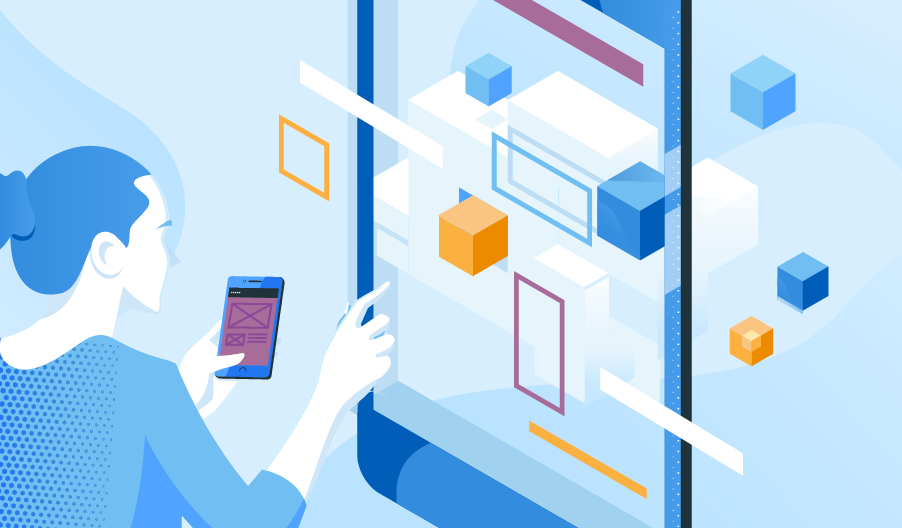Digital Signage Design: Why You Should Offer a Powerful Built-in Content Customization Tool
Editor’s note: Enabling easy and convenient content design is a crucial part of any digital signage solution offer. Read on Anastasia’s article below to learn how a feature-rich built-in tool for content creation can help you win the digital signage market. Also, feel free to check out how ScienceSoft’s professional application developers implement such solutions.

With people’s eyes now being drawn to different types of animated displays rather than static billboard frames, digital signage (DS) is becoming the most effective way of communicating advertising messages to the audience. After years of performing business analysis for DS projects at ScienceSoft, I can say that the most important aspect of any DS solution is the way it allows creating and manipulating its key element – the content.
My colleagues at ScienceSoft and I have learned it by experience that a successful digital signage solution should allow its users to conveniently and easily create and customize DS content on their own. Only this way the solution can attract various businesses, who can freely adapt it to their very different needs.
At the same time, you may wonder:
Why not offer digital signage content creation as a service instead?
Indeed, many DS startups I’ve worked with used to sell content creation as an optional service to their digital signage solutions. Those with about 50 clients chose to outsource design tasks to third-party experts, while those with a larger client base tried to form an in-house digital design team.
In both cases the companies had a hard time finding competent resources. The market of the designers, who work specifically with digital signage, is scarce. So, it usually took vendors 6 months on average to find the right expert, and even more – to form a team of them.
Besides, less generic skills are more expensive. The costs of neither outsourced, nor in-house design efforts allowed the companies to offer content customization as a service for a competitive price, which is why they turned to ScienceSoft and requested development of a content customization tool.
Finally, many of such customers had clients who openly insisted on the option of content customization. This was a critical condition for a significant part of their target audience: if the solution didn’t allow them to customize their digital signage content on their own, they were simply not in for any further discussion.
So, my short answer to the question in the subheading above: Because it’s too risky and time-consuming, too costly, and easily puts you behind the competitors who do offer customization tools.
Dispelling the myths about in-built content design tool creation
While communicating with the customers who weren’t yet sure about investing in the development of a content design tool, I could learn a lot about their doubts. I’ll tackle the most popular of them below to show that most of them are based on mere myths and misunderstanding.
“It’s hard to compete with the ready-made content design tools.”
The market offers various ready-made tools for creating digital signage content, and, instead of developing one of your own, you may be tempted to partner up with an existing one. Yet, as ScienceSoft’s experience shows, integration of third-party tools into your digital signage solution can significantly exceed the development by price and duration.
Moreover, with your own content design solution you can introduce powerful features that will help you gain a real advantage over your competitors. Although the market is diverse, few solutions offer such powerful digital signage content features as AI- and RPA-based components, automated message updates (based on schedules and conditional rules) or interactive adaptability of content to the real environment. One of ScienceSoft’s recent digital signage projects even involved the development of a custom tool that allows clients to create highly realistic AR content.
“Content designers won’t be willing to adopt yet another design tool.”
Some of your potential clients already use a digital signage content creation tool, so you may fear that they’d be reluctant to get used to yours and prefer integration of the tool they’re familiar with instead. It’s important to stay realistic here: you simply can’t appeal to all the clients, who all use different tools anyway.
What I suggest doing is offering a user-friendly interface with a low learning curve that allows designers to get accustomed to a new environment from the get-go. For example, we at ScienceSoft always involve professional UX designers in our projects to convey the in-depth UX research of the future users and tailor the interface of a digital design tool to their needs.
“Investing in the development of this tool is too risky.”
Considering that the need to introduce a content design tool is partially defined by the cost reduction goal, it’s natural to be worried about the required investment and ROI. I advise to begin with assessing the costs of developing each content design tool feature and compare them with its average predicted ROI. At ScienceSoft, we also suggest starting with an MVP development that requires minimum budget investment and creating a roadmap for evolving the tool further. This way, our clients more freely invest after they already start receiving first revenue. Consider this option for your project as well.
Make clients choose your digital signage solution
For your digital signage solution to win a wide customer base on the digital market, consider offering a built-in content customization tool that enables advanced content features and has user-friendly UI. If you need help with the implementation of your DS project or don’t know where to start, feel free to contact ScienceSoft’s digital signage team.

